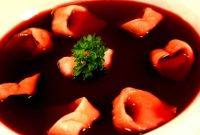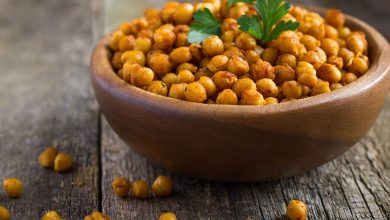Healthy eating: the healthy side of Polish cuisine
If you ask foreigners what they associate with Polish cuisine, they will most likely answer like this: “There is a lot of meat, especially pork! And potatoes, bacon, and dumplings, very heavy food! It should be hard, because it’s so cold in Poland. ” Do you agree?
Mountains of potatoes
We may be exaggerating a little, but the stereotype about fatty Polish cuisine, which consists mainly of meat and potatoes, does exist.
Poles themselves, when asked about their favorite food, most often mention dishes made from pork and starchy foods. And this is what we most often show the world: the menu of most restaurants of Polish cuisine in Europe and America is based on a small set of immortal classics: pierogi – dumplings, which are usually served with fried onions and cracklings, gołąbki – cabbage rolls, stuffed with meat and drizzled with creamy sauce, “shadowy” – breaded pork chop and “kielbasa” – sausage.
We’ve created popular traditional eateries that often serve giant portions of meat (mostly pork) in a variety of sauces with mountains of potatoes and braised cabbage. These dishes, as historians of cuisine never tire of repeating, have nothing to do with authentic Polish cuisine.
Fortunately, the paradigm of taking quantity over quality is being challenged by a new generation of Polish chefs, cookbook authors and modern housewives, who show that Polish cuisine can be not only interesting and tasty, but also surprisingly healthy.

New old trends
Browsing foreign blogs on healthy eating and special diet food, Poles are often convinced that what is seen as new trends in the West is often used in everyday cuisine in Poland. For many years we have underestimated some of the treasures of Polish cuisine that are now fashionable and even magical in the circles of nutritionists and other internet gurus.
For example, seasonality is something that Poles take for granted: for many years we did not have access to imported goods, and therefore had to consume local seasonal products. And although now there is an opportunity to buy raspberries even in February (although at this time they are usually expensive and tasteless), Poles prefer to wait for the season: asparagus and cabbage in May, strawberries and young potatoes in June; then summer berry expanse, beans, tomatoes, etc. .; and in autumn plums, mushrooms and pumpkin. Obviously, the most problematic season is winter, but we are saved by roots, apples and, of course, some exotic fruits, for example, tangerines, oranges and lemons, which in any case need to be imported. And yet, for centuries, the magic process of fermentation has been the best way to maintain vitamin levels.
– Pickled vegetables –
For a long time, the best way to preserve food has not been recognized by Western gourmets, who are not used to the sour taste of pickled foods. Much has changed thanks to the global popularity of Korean cuisine, especially the spicy pickled kimchi. Still, the very idea of “sour milk,” vegetables that have been left to ferment for months, and bacteria in your food may be a problem for some.
But it is thanks to these bacteria that fermented food is so beneficial: they convert sugar into lactic acid, which is a valuable probiotic that can strengthen immunity and improve digestion. It not only facilitates the digestion of carbohydrates, proteins and fats, but also improves skin condition, strengthens hair and nails and improves the absorption of iron, thus preventing anemia. And what is crucial these days is a direct link between the biological diversity of the microbiota, supported by the consumption of foods high in probiotics, and the reduction in the risk of food allergies, which are increasingly common.

Thanks to chefs such as Alexander Baron, as well as educators and bloggers, fermentation is at its peak in Poland. They claim that almost anything can be pickled, although there is a classic selection that remains the most popular.
Pickles and sauerkraut
These pickled vegetables are an indispensable feature of Polish cuisine. They taste amazing, contain almost no calories and provide us with vitamins throughout the year (which was extremely important in the past and is important again now that the concept of seasonality is key).
Yeast
Any Pole will tell you that real bread is sourdough bread. Making it is a real art: the leaven matures for several days and needs to be “fed” before being mixed with the rest of the dough. It should rest a little more, and only then it can be baked.
Although carbohydrates in general and breads in particular have a bad reputation with nutritionists, sourdough bread has a fairly low glycemic index and is easier to digest than other breads, especially those baked with whole rye grains, spelled flour, or sprinkled with flax, nigella or sunflower seeds.
The options are endless, and good bread is always worth looking for – you might find Poles looking for bakeries wherever they go.



